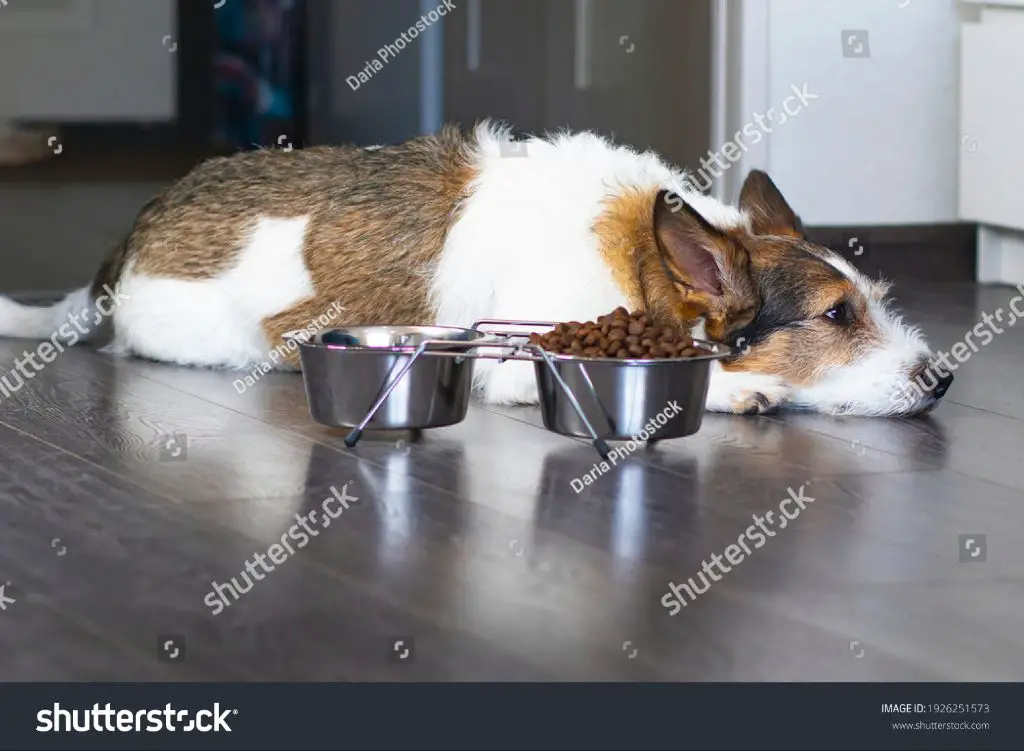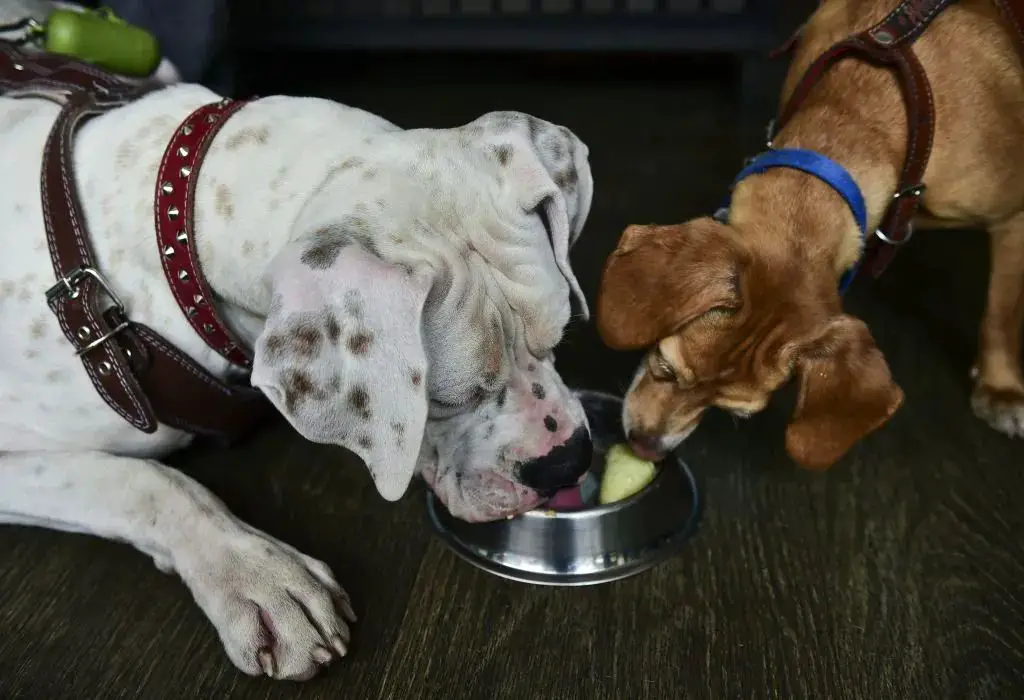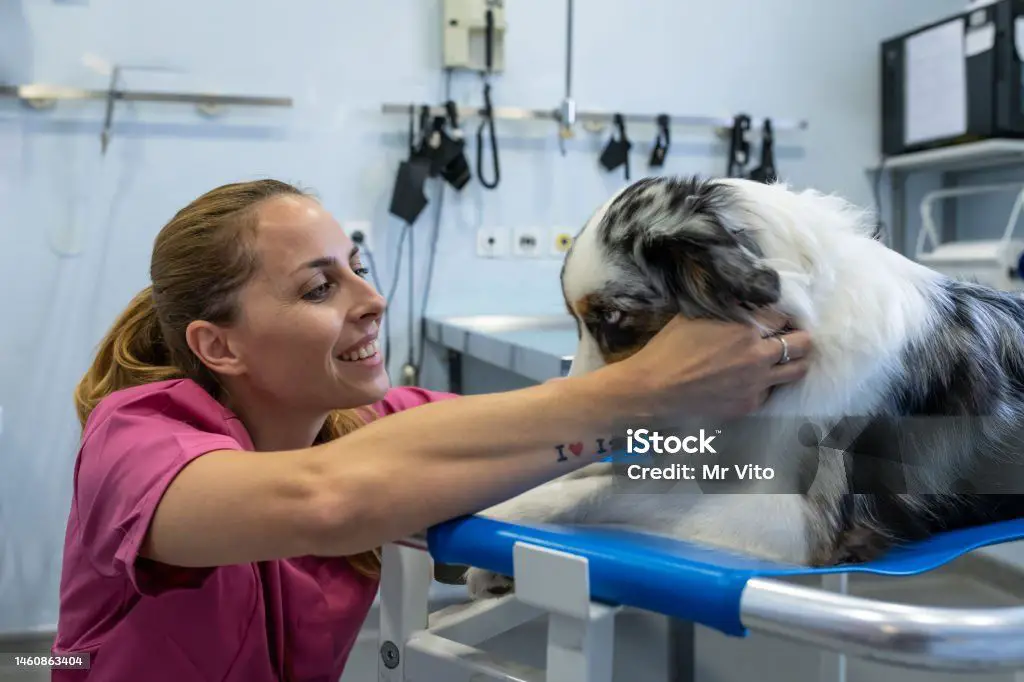Should You Worry When Your Dog Won’t Eat?
Nothing is more concerning for a pet owner than when their beloved canine companion turns up their nose at mealtime. A dog refusing food is a common issue that most dog parents will deal with at some point. Though it’s normal for a dog’s appetite to vary from day to day, ongoing disinterest in food can indicate an underlying health problem.
In this article, we’ll explore the reasons behind picky eating in dogs and provide tips on how to encourage your pooch to eat. You’ll learn techniques for making mealtime more enticing along with guidance on when it’s time to seek veterinary assistance. Read on to get answers to common questions like “How long can a dog go without eating?” and “Should I take my dog’s food away if they don’t eat it?”
Reasons Dogs May Not Eat
There are several potential reasons why your dog may not be eating their food. Some of the most common include:

Illness or Health Issues
If your dog is feeling under the weather from an illness, injury, or other health problem, they may lose their appetite. Issues like upset stomach, mouth pain, infections, or anything else causing discomfort can suppress their desire to eat.
Stress or Anxiety
Dogs who are stressed, anxious, or nervous may turn up their nose at their food bowl. Major changes to their routine, environment, or family members can trigger behavioral issues that manifest in reduced eating.
Picky Eating
Some dogs are just naturally picky eaters. They may refuse to eat food they find boring or unappetizing. Picky eaters may hold out for tastier food, scraps, or treats.
Effects of Weather
Hot summer weather can lower your dog’s appetite and make them less interested in eating their normal food. Likewise, cold wintery weather may have the same effect.
Boredom with Food
If you feed your dog the same food day after day, they may simply become bored with it. The repetitiveness can make the food unappealing after a while.
How Long Can a Dog Go Without Eating?
How long a dog can go without eating depends on several factors like their age, health status, and activity level. Puppies and older dogs may only be able to go a day or two without food before experiencing adverse effects. Healthy adult dogs can generally go 1-2 days without eating before it becomes a concern. After 2 days without food, dogs can start to experience issues like lethargy, vomiting, diarrhea, and blood sugar crashes.
It’s important to monitor your dog closely and contact your veterinarian if they go more than 1-2 days without eating. Some signs that warrant a vet visit include lethargy, weakness, vomiting, diarrhea, shaking, and collapse. Your vet can run tests to determine if there is an underlying medical issue causing the poor appetite and provide supportive care like IV fluids and medications if needed. Leaving a dog without food for an extended period can be very dangerous and even life-threatening in some cases.
When to Take Food Away

There are a few instances when you should take your dog’s uneaten food away:
After 15-30 minutes – If your dog hasn’t touched his food after 15-30 minutes, he’s likely not interested in eating at that time. Leaving the food out can lead to boredom and lack of appetite at the next mealtime.
To prevent boredom – Dogs enjoy novelty when it comes to food. Serving the same bland kibble day after day can cause boredom, leading to decreased appetite. Taking the food away after a short time and offering something new and tasty later can perk up your dog’s interest in mealtime.
For health reasons – Allowing wet food to sit out can increase bacterial growth, while flies and other pests can contaminate dry kibble left out too long. Removing uneaten wet food after 15-30 minutes and dry food after an hour or so reduces health risks.
Alternatives to Taking Food Away
Instead of taking your dog’s food away if he doesn’t eat, there are some alternatives you can try to encourage your dog to eat without resorting to negative reinforcement.
One option is to add some enticing mix-ins or wet food to make the kibble more appetizing. Things like shredded chicken, low-sodium broth, canned dog food, plain yogurt, or pumpkin puree can make the food more tasty and aromaic. Just be sure to avoid adding too many fatty or sugary mix-ins.
You can also try hand feeding your dog as a form of positive reinforcement. Sit with your dog and gently offer pieces of kibble in your hand, praising him when he eats. This can help build an enjoyable association with meal time.
Sometimes simply changing the location or feeding routine can spark a dog’s appetite. Feed your dog in a different spot, try moving the bowl to a quieter area, or switch to scheduled feedings instead of free feeding. Having a consistent schedule and location can help create a regular eating pattern.
The key is finding what motivates your individual dog to eat without resorting to negative reinforcement tactics like taking away food. A little creativity and patience in making mealtime a positive experience can often get your dog eating normally.
Providing a Balanced Diet
It’s important to provide your dog with a nutritionally balanced diet to keep them healthy. The best way to do this is to feed them high-quality commercial dog food formulated by veterinary nutritionists. Look for brands that meet AAFCO standards for complete and balanced nutrition. AAFCO conducts feeding trials to ensure dog foods contain the right proportions of proteins, fats, carbohydrates, vitamins and minerals that dogs need.
While you can certainly make homemade dog food, this can be risky if not formulated properly with the help of a veterinary nutritionist. Homemade food may be deficient or unbalanced in certain nutrients if you don’t know the right ingredients and proportions to use. It’s best to get guidance from your vet.
Some dogs may need additional supplements depending on their health needs. For example, senior dogs may benefit from joint supplements to support their mobility. Pregnant and lactating dogs require higher calorie diets along with increased protein, fat and calcium. Your vet can recommend appropriate supplements if needed.
The key is choosing a high-quality commercial diet and complementing it with any supplements your vet advises. This will provide a balanced nutritional foundation tailored to your dog’s needs.
Creating a Feeding Routine
Establishing a regular feeding schedule can help encourage your dog to eat. Dogs thrive on consistency and setting a routine will create an expectation around mealtimes. Try feeding your dog at the same times every day rather than leaving food out all day.
If you have multiple dogs, consider separating them at mealtimes if one is preventing the other from eating. Feed them in different areas or close doors between them at mealtimes so each dog can eat without competition or stress.
You can also try feeding smaller portions at a time. Rather than filling your dog’s bowl to the top, start with just a cup or two of food. You can always give them more if they finish it. This creates a sense of urgency to eat before it’s gone.
Sticking to a feeding routine with set mealtimes, proper portions, and reduced competition or stress can help create positive eating habits.

Making Food More Appealing
If your dog is bored with their usual food, there are some simple tricks to make it more enticing:
Warm it up – Heating your dog’s food slightly brings out the aroma and makes it more appetizing. Microwave wet food for 10-15 seconds or add warm water to dry kibble. Be sure to stir well and test the temperature before serving.
Mix wet and dry food – The texture and smell of canned/wet food can make dry kibble more interesting. Mix a tablespoon or two of wet food into the kibble to encourage picky eaters.
Use puzzle toys – Instead of dumping kibble in a bowl, put small portions in interactive puzzle toys. Working for the food can stimulate your dog’s appetite and natural foraging instincts. Choose toys suited for your dog’s size and abilities.
When to Seek Veterinary Help
If your dog is experiencing significant weight loss or other concerning symptoms like lethargy, vomiting, diarrhea, etc., you should seek veterinary care. Significant weight loss in a short period of time is not normal and could signal an underlying condition that needs treatment.

Some examples of conditions that may cause appetite loss and weight loss in dogs include:
- Dental disease
- Gastrointestinal issues like inflammatory bowel disease
- Organ dysfunction like kidney or liver disease
- Diabetes
- Cancer
- Infections
Your veterinarian can perform diagnostic tests like bloodwork, imaging, and biopsies to determine if there is an underlying condition contributing to your dog’s lack of appetite and weight loss. Based on the diagnosis, they will recommend appropriate treatment which may include medications, diet changes, intravenous fluids, or other therapies.
It’s important not to ignore changes in your dog’s appetite and weight. Catching and treating medical conditions early on gives the best chance for recovery. Contact your vet promptly if your dog shows signs of illness and unwillingness to eat.
Conclusion
When a dog stops eating, it can be concerning but there are usually some simple steps you can take to encourage their appetite again. Recapping the main points, consider if there has been a change in your dog’s routine, try giving them some time and then taking the food away if they don’t eat. Make sure you are giving them balanced nutrition suited for their breed, age and activity level. Create set mealtimes to get them into a routine. Try making the food more enticing by warming it, adding mix-ins or exercising them before meals. If issues persist for more than a day or two, consult your veterinarian as there could be an underlying health issue.
Adapting to your individual dog’s needs and quirks around food is important. While it may seem simpler to free-feed, dogs thrive on routine and consistency. Stay closely tuned into any changes in their eating habits as this could indicate a problem. But in most cases, a healthy dog will not starve themselves without good reason. Have patience, make eating enjoyable and nutritious, and seek veterinary guidance if you have ongoing concerns about your dog’s appetite and health.